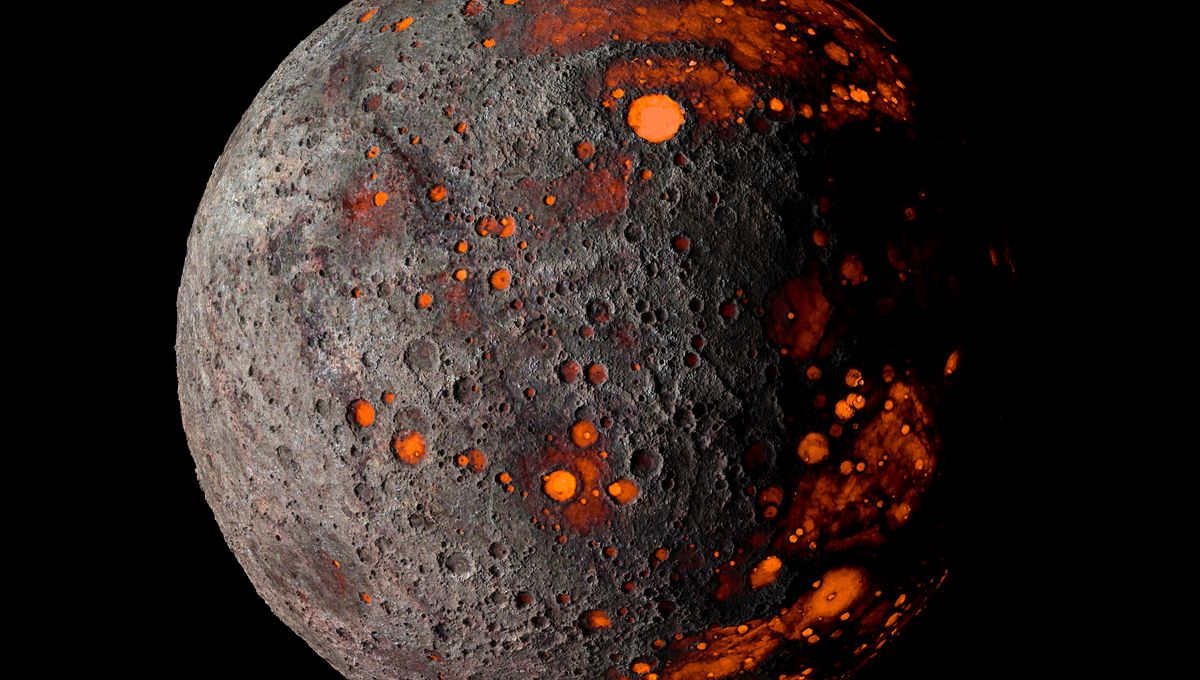
A newly discovered planet is a record-breaker in many ways, but the one for which it is likely to be remembered is heat so extreme that one hemisphere is lava.
The HD 63433 system, also known as (TOI 1726), interests astronomers because it is a relatively close star (73 light years away) that resembles a young Sun. At 99 percent of the Sun’s mass and with similar proportions of heavy elements, HD 63433 will end up being very similar. Currently, however, it is less than 10 percent of the Sun’s age, providing excellent insight into our home star’s early development.
On the other hand, HD 63433’s planetary system is nothing like how our own would have looked in its early days. Four years ago, two planets were found with sizes similar to Neptune, but orbits of just 7.1 and 20.5 days. Around some of the faint red dwarves we study that might put one of them in the habitable zone, but with HD 63433’s Sun-like luminosity, both make Mercury look cold. Still, even with such furnace-like planetary siblings, the newly discovered HD 64433 d stands out.
When a team analyzed data from the TESS space telescope they found additional, shallower, dips in the light coming from HD 63433 that these two planets could not be responsible for. Another planet is orbiting HD 63433 – but it’s a lot smaller than the first two discoveries, so when it passes between us and the star, it blocks out less light.
After further analysis, the team concluded the new planet, HD 63433d, has a diameter about 7 percent larger than Earth’s, but it orbits in just 4.2 days. That means two things: it’s staggeringly hot, and one side will always face the star, a phenomenon known as being “tidally locked”.
As a result, the star-facing side is even hotter than it would be if it got some relief at night. The side in question is estimated to have a temperature of 1,257 °C, (2,294 °F). That doesn’t just mean that any atmosphere long since boiled away – the rocks will have turned to lava.
HD 63433d is not the hottest planet we have ever found. Kepler-10b orbits a star of similar brightness in less than an Earth day. It’s much easier for us to detect these sorts of close-in planets than those that orbit more slowly, so we have quite a collection.
Nevertheless, our previous super-hot discoveries are also dissimilar to Earth in other ways, such as having much larger masses. If it was only further out, HD 63433d would be a near-perfect analog for the early Earth. Although its mass, and therefore density, are not yet known, it is thought to have a similar composition.
HD 63433 has characteristics that mark it as a member of the Ursa Major Moving Group, a set of stars that formed together in a cluster about 414 million years ago and have gradually drifted apart. The announcement of HD 63433d is published along with a study of several other members of the same group.
Astronomers are likely to keep paying the system plenty of attention. Since most planets in star systems orbit in roughly similar planes, as occurs for our own, the presence of several planets that transit their star from our perspective greatly raises the chances of other worlds further out that do the same. If we haven’t found them yet, that may just be because we haven’t been watching long enough.
Even the planets we have found, while clearly hostile to life, could teach us something interesting about the scattering that goes on early in a star system’s life, which left its mark on Earth and the Moon.
Although we have found around 5,000 planets, only 50 are thought to be less than 500 million years old. Most of those are gas giants, orbit very faint stars, or both. HD 63433’s combination of Sun-like brightness and relative closeness means it’s bright enough to be seen with binoculars (magnitude 6.9), making its fluctuations easy for telescopes to study. “HD 63433 is the brightest known host of young transiting exoplanets in the sky,” the study notes.
For lovers of the weird acronyms astronomers use for their projects, this work was done as part of the TESS Hunt for Young and Maturing Exoplanets (THYME).
The study is published open access in the Astronomical Journal.
Source Link: Nearest Young Earth-Sized Planet Is Half Lava And Metal As Hell